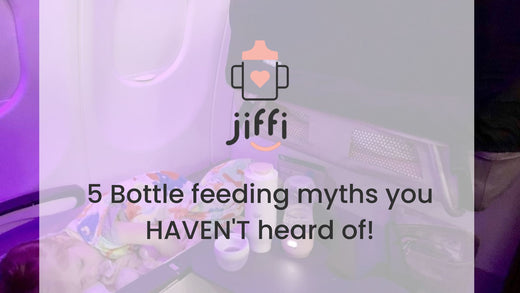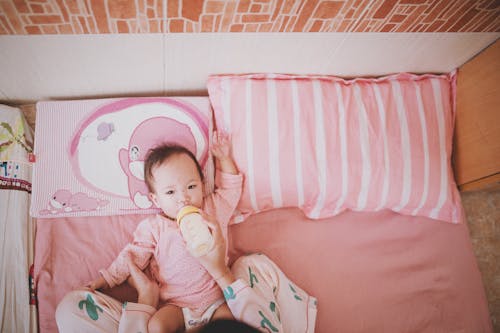
Parents have to learn a lot, especially if it's their first child. Learning becomes even more difficult when you are unable to distinguish between reality and fiction within the abundance of advice you are told. It can be exhausting, especially since your stressed, AND caring for a newborn.
If you recall, many of us used to play a game as children in which a statement was transferred across numerous telephone calls, twisting with each transfer. Many common parenting misunderstandings exist. Bottle-feeding is one of those topics where many falsehoods lie. The majority of parents bottle-feed their children. Some parents use bottles occasionally, while others use them solely for feeding.
1. You can either feed your baby with formula milk or breast milk, not both. 🚫
People seem to believe that parents have to choose between the two possibilities. You can, however, feed your baby with a combination of the two. Give them formula milk on sometimes while breastfeeding them on others.
This is advantageous since the baby receives all of the benefits that breast milk provides. At the same time, as Ferraro has indicated, his caloric and nutritional requirements are met with formula milk.
2. All baby bottles are the same. 🚫
This is incorrect. Not all bottles are the same. When their babies refuse bottles, parents become concerned. This is even more concerning if the mother is set to return to work, but the baby refuses to drink from the bottle. According to Katie Ferraro, a registered dietician who is also an infant feeding specialist and an associate professor of nutrition at the University Of California San Francisco Graduate School Of Nursing, the baby will require some time to adjust to the new feeding approach.
If you have to go to work, give yourself at least two weeks to transition from breastfeeding to bottle feeding.
3. It takes a lot to clean baby bottles. 🚫
Parents are frequently concerned about how they will clean the bottles on a daily basis. It is, however, not dissimilar to doing the dishes every night. Some bottles may be cleaned in the dishwasher on the top rack, making cleaning them a breeze.
If you're not sure if this kind of sanitization is right for you, check out Dr. Brown's explanation. It explains how to remove bacteria from bottles using a microwaveable steam steriliser. You can handle up to four bottles at once, and the technique may also be used to disinfect Sippy cups and other similar products.
4. You can use only bottles during the first year. 🚫
According to Ferraro, you can start using a sippy cup once your baby is six months old. At this age, the babies do not require water. However, starting to feed them at that age helps to improve their speech development and encourages them to eat independently.
5. Bottle-feeding can cause colic in infants. 🚫
Indigestion is usually thought to be the cause of colic. It's possible that air bubbles get into the baby's system as he drinks from the bottle, creating indigestion. To solve this difficulty, you can use Dr. Brown's bottles, which come with a Dr. Brown's bottle warmer car adaptor. These are the only bottles that don't cause this issue. This is because the bottle has an internal vent mechanism that prevents the production of air bubbles by removing the negative pressure.

